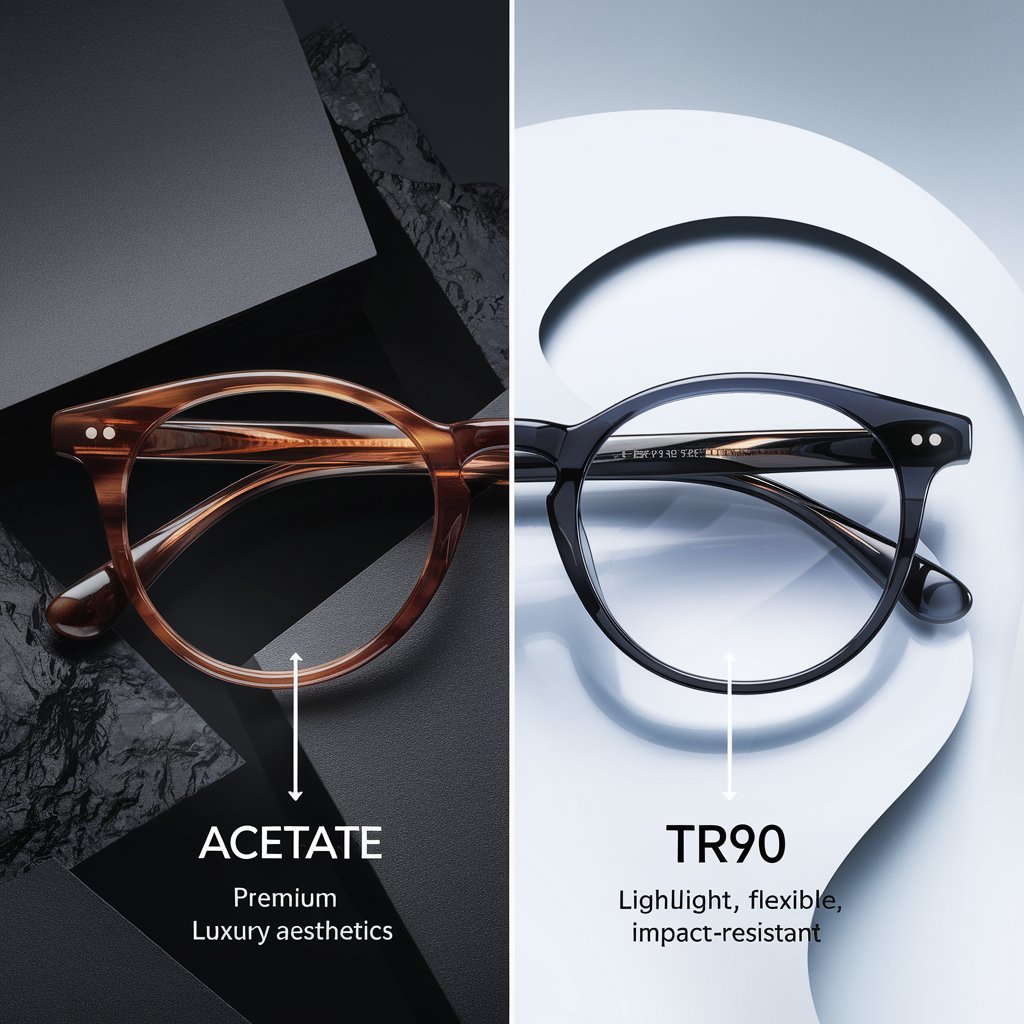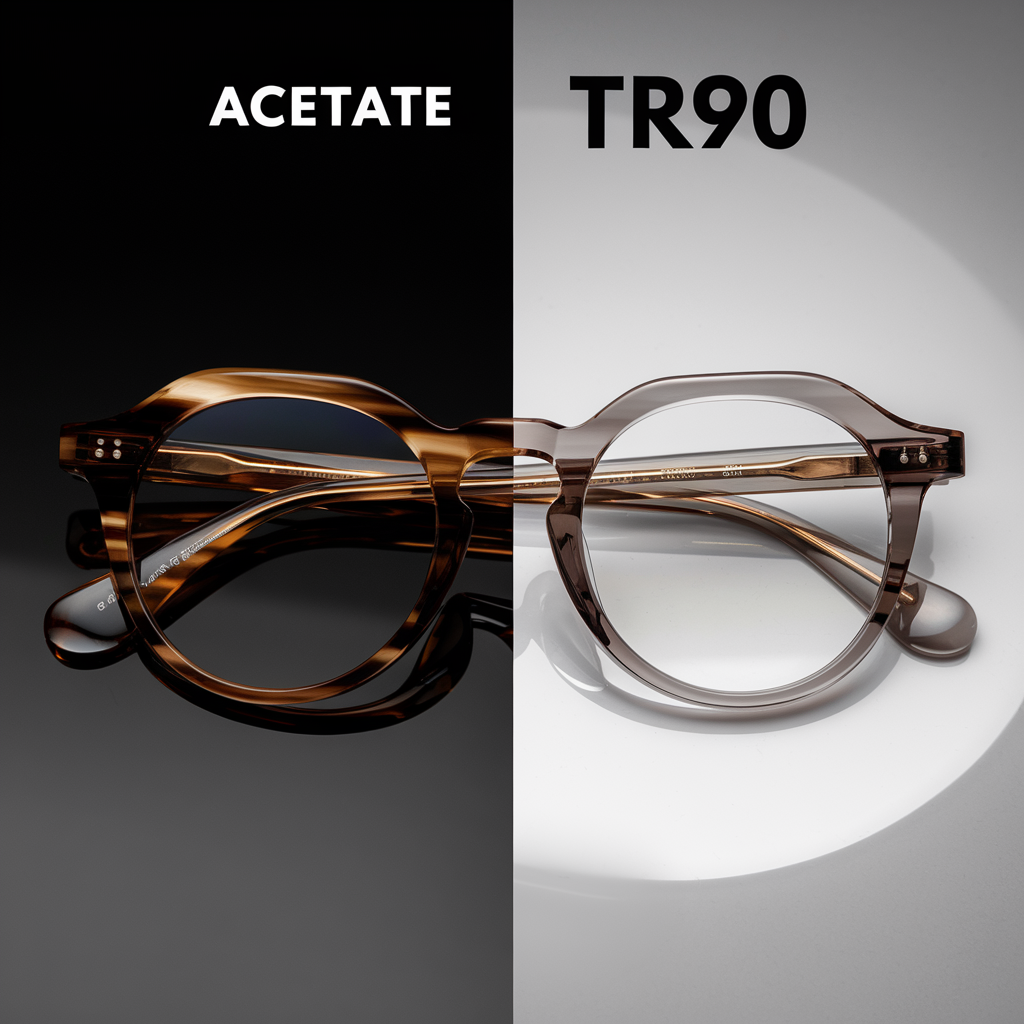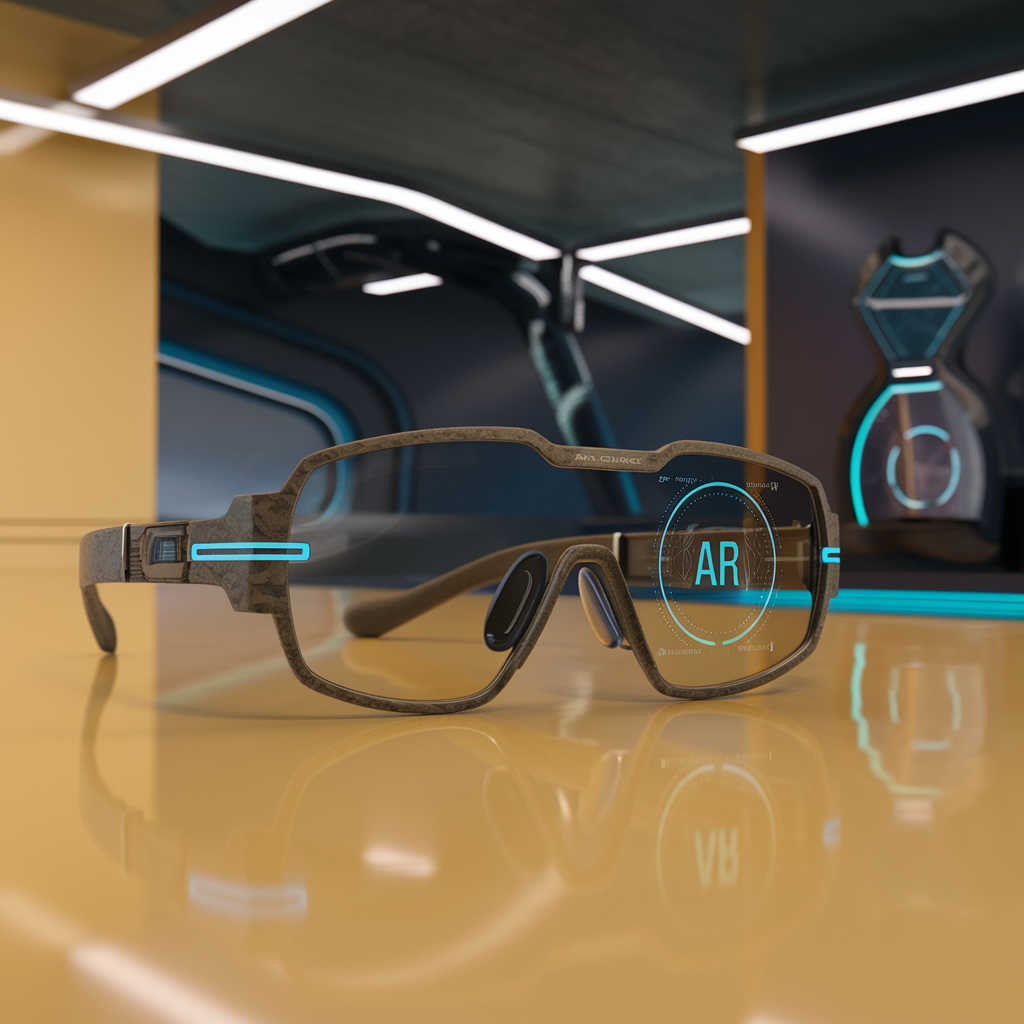Choosing the right eyewear frame material is crucial—not just for aesthetics, but also for comfort, durability, and safety. Acetate and TR90 are two of the most popular materials, but how do they compare?
Acetate frames offer premium aesthetics, durability, and rich color variations, while TR90 frames provide lightweight flexibility and impact resistance. This guide explores their properties, advantages, and how to choose the best option.

Understanding these materials will help both consumers and eyewear brands make informed decisions. Let’s explore their differences and applications.
What Are the Key Properties of Acetate Eyewear Frames?
Acetate is a plant-based material known for its rich color options and durability.
It is made from cellulose acetate and processed through advanced techniques such as injection molding and hand-polishing.

Acetate Frame Characteristics
| Feature | Description |
|---|---|
| Composition | Derived from natural cellulose, making it hypoallergenic. |
| Durability | Resistant to warping, fading, and environmental damage. |
| Aesthetic Appeal | Rich color options, including layered designs. |
| Eco-Friendliness | Can be made from renewable sources. |
Acetate frames are commonly found in premium eyewear collections due to their high-end look and feel.
How Does TR90 Compare to Acetate for Eyewear Frames?
TR90 is a high-performance thermoplastic material known for its lightweight flexibility.
Developed using Swiss technology, TR90 frames are ultra-light, impact-resistant, and heat-resistant, making them ideal for active lifestyles.

TR90 Frame Characteristics
| Feature | Description |
|---|---|
| Composition | Made from thermoplastic memory polymer, ensuring flexibility. |
| Weight | Lighter than acetate, reducing nose and ear pressure. |
| Durability | Highly impact-resistant and heat-resistant. |
| Eco-Friendliness | Food-grade safety standards, free from toxic chemicals. |
TR90 frames are popular in sports and performance eyewear due to their resilience.
Acetate vs. TR90: How Do They Compare?
Comparing these materials helps determine which is best suited for different eyewear needs.
Acetate excels in luxury aesthetics and durability, while TR90 provides comfort, lightweight wear, and high impact resistance.

Feature Comparison Table
| Factor | Acetate | TR90 |
|---|---|---|
| Weight | Heavier | Lighter |
| Durability | High (resistant to scratches and fading) | High (impact-resistant) |
| Color Options | Wide variety, including layered designs | Limited but vibrant |
| Flexibility | Less flexible | Highly flexible |
| Comfort | Moderate | Excellent |
| Eco-Friendly | Plant-based material | Food-grade safe plastic |
Each material has unique strengths, making them ideal for different use cases.
How to Choose Between Acetate and TR90 Frames?
Your choice depends on personal preference, lifestyle, and aesthetic considerations.
Acetate is ideal for high-end, stylish frames, while TR90 is best for lightweight and active wear.

Key Selection Factors
1. Style and Aesthetics
- Acetate offers richer color options and premium finishes.
- TR90 provides a modern, sporty look with vibrant colors.
2. Comfort and Weight
- TR90 is significantly lighter, reducing strain on the nose and ears.
- Acetate is more substantial, offering a premium feel.
3. Durability and Maintenance
- Acetate frames resist discoloration and scratches better.
- TR90 frames withstand impacts and bending.
Knowing your needs will help you choose the right frame for your lifestyle.
Future Trends in Eyewear Materials
The eyewear industry is evolving, with new materials and innovations emerging.
Sustainable materials, smart eyewear, and advanced coating technologies are shaping the future of eyewear.

Innovations to Watch
1. Eco-Friendly Materials
- Biodegradable acetate and recycled TR90 plastics.
- Plant-based polymer alternatives.
2. Smart Eyewear Integration
- TR90 and acetate frames designed for AR/VR applications.
- Lightweight smart glasses for all-day wear.
3. Durability Enhancements
- Scratch-resistant coatings.
- UV-protection layers integrated into frames.
Eyewear technology is advancing rapidly, offering better options for consumers.
Conclusion
Acetate and TR90 each offer unique benefits—acetate for luxury and durability, TR90 for lightweight comfort and flexibility. Choosing the right material depends on personal preference, lifestyle, and aesthetic needs.

